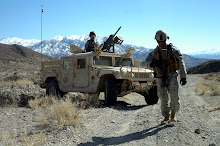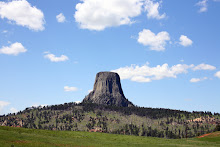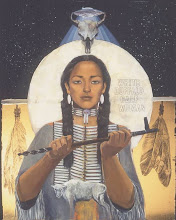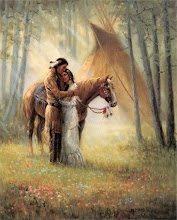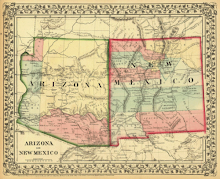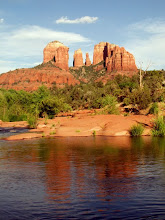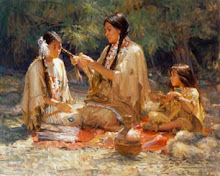By Steve Hammons
The Shawnee Native American tribe lived in southern Ohio and the surrounding region for thousands of years. The huge river flowing through their homeland was known as a place where eagles lived and nested along the banks.As a result, the Shawnee called the great river “Kiskepila Sepe.” This translates to English as “Eagle River” – “kiskepila” meaning eagle, and “sepe” meaning river.
The word “Ohio” used for that river is believed to originate from the Seneca and/or Cayuga tribes of today’s western upstate New York, northwestern Pennsylvania and northeastern Ohio at the headwaters of the same great river. The terms reportedly used by those tribes for the river were “O-hee-yuh” or “O-hee-yo,” or sometimes expressed as "Ohi-yo,” all meaning “Good River.”
The Seneca and Cayuga were part of the original five tribes located south of Lake Ontario that formed the Iroquois Confederacy circa the year 1142. The confederacy is considered a prominent example of participatory democracy and social unity, and was an example for the U.S. Founding Fathers.
The Lenape or Delaware people of Pennsylvania referred to the combined Ohio River and Allegheny River of the Pittsburgh region as “Kithanink,” meaning “Main River.” The town of Kittanning, a bit northeast of Pittsburgh and once a site of a large Lenape town, is named for “on the Main River.”
ANCIENT LIFE ON EAGLE RIVER
Further south and west in Shawnee lands, the vast Eagle River flowed along what are now the boundaries of present-day Pennsylvania, Ohio, West Virginia, Kentucky and Indiana. The Shawnee lived and hunted both north and south of the Eagle River.
The Shawnee used their canoes to travel on the massive river, and the many other rivers and streams that flowed into it. These waterways offered a clean and pure water supply as well as good fishing, helping supply food for the Shawnee and others in the region.
But the Shawnee and nearby tribes like the Cherokee followed many thousands of years of human settlement in this region. Ancient and nearly-forgotten people built huge mounds and earthworks throughout southern Ohio.
The Serpent Mound in south-central Ohio is one well-known example. These ancient peoples of the region are known as the Adena (the oldest), Hopewell, and Fort Ancient (most recent) cultures.
Today, visitors and explorers can see many of the mysterious mounds and earthworks of southern Ohio. Some sites are now part of state and national parks and other public locations. Unfortunately, some have been destroyed over the decades from modern farming, building and roads.
In the Cincinnati region north of the Ohio River in southwestern Ohio, as well as in the south-central part of the state, and in the more-hilly Appalachian Mountain foothills of southeastern Ohio, there are more than 70 ancient mounds and earthworks.
East of Serpent Mound about 90 miles and just outside of Athens, Ohio (home of Ohio University), is the Wolf Plains Group of mounds and earthworks. That location along the Hocking River is now the community called The Plains (Natives called the river the Hockhocking). The 30 earthworks in Wolf Plains Group also include 20 mounds in a conical shape as well as nine earthworks described as circular enclosures.
So, the more-modern Shawnee, Cherokee and other tribes who lived, hunted and fished along the Eagle River for thousands of years were following in the footsteps of many generations of the more-ancient people of North America.
Further southwest along the Eagle River is the current town of Portsmouth, Ohio (home of Shawnee State University). This region became prominent for the Shawnee and other tribes in the 1700s when the French and British were competing in North America. As trading and interaction with both the French and British evolved, a large Shawnee town called Shannoah sprang up in 1730 near the Eagle River on the Scioto River.
Shannoah is sometimes referred to as Sonnontio or Sonhioto, The location was also known as Lower Shawnee Town or Lower Shawneetown. It was located on a previous site of the earlier mound-building Fort Ancient people.
It became a center for diplomacy and trading between 1734 and 1758. French and British traders and agents reportedly regarded the town as one of two capitals of the Shawnee tribe. Shannoah or Lower Shawnee Town is described as a sprawling district along the Scioto River, with groups of homes and longhouses.
Seneca, Lenape and others also lived there but it was mainly a Shawnee community. The population is said to have included Native traders, warriors and their families, people from other tribes and the European traders and agents. One account about the town described a “fairly large number of bad characters from various nations.”
Did the diverse people at Shannoah call the big river by the Seneca or Cayuga term O-hee-yuh or Ohi-yo – Good River? Did the Lenape still call it Kithanink – Main River? Or did the Shawnee host culture name prevail with Kiskepila Sepe – Eagle River? We now know which name stuck over time: O-hee-yuh or Ohi-yo.
NEW NATION LEARNS FROM IROQUOIS CONFEDERACY
So, the westernmost tribes of the Iroquois Confederacy, the Seneca and Cayuga, got to name the Ohio River as well as the state of Ohio. Other tribes of the original 1142 confederacy included the Mohawk, Oneida and Onondaga. The Tuscarora, originally from eastern and central North Carolina, joined in 1772.
The combined people of the Iroquois (a French word) Confederacy are known as Haudenosaunee, or "People of the Longhouse." The confederacy is known for the “Great Law of Peace” and the “Tree of Peace,” the eastern white pine.
Ironically and sadly, their word Ohiyo or Ohio was part of the Northwest Ordinance of 1787 that claimed and planned for the acquisition of Indian lands in Ohio, Indiana, Illinois, Michigan, Wisconsin and part of Minnesota.
The official name of the Northwest Ordinance was "An Ordinance for the Government of the Territory of the United States North West of the River Ohio." This law authorized the new U.S. government to start selling off Indian lands to investors, land speculators, government officials and settlers – and to support these activities with armed force as needed.
Yet, the Iroquois or Haudenosaunee Confederacy played another important part in the founding of the new nation. Their concepts and social-political structures of participatory democracy and peaceful coexistence among the previously-warring tribes were noted by Benjamin Franklin and others planning a new, democratic, unified nation.
Before the Great Law of Peace, there were many years of destructive and cruel warfare between the five tribes, and killing and other serious problems internally in their societies. Bloodshed and darkness, and dark practices. Darkness upon the land and the people.
Tribe leaders were asked to bury their weapons and war hatchets under an eastern white pine – the Great Tree of Peace.
There are unusual, mystical stories and legends about Dekanawida’s birth, life and activities. He is considered by many to be a visionary and prophet. He could also be considered a healer and teacher.
In his peacemaking efforts, Dekanawida enlisted the help of the Onondaga leader Hiawatha and a Seneca female leader named Jigonsaseh. Dekanawida wanted to not only seek an end to constant warfare, but also to provide new moral directions, spiritual guidance, and teachings about health of body and mind for the people of the five tribes.
Senior leaders of the Haudenosaunee reportedly met with delegates of the Continental Congress in 1776 to discuss the confederacy's concepts of democratic self-government, and bringing tribes and peoples (and colonies) together in a more-unified way.
Today, the Shawnee’s Eagle River still flows south through those same rolling foothills along the western flank of the Appalachian Mountain Range and then west-southwest toward the flatter country, all the way to the Mississippi River.
The Eagle River flows through a land where there is now a new nation. A nation where its early founders and leaders tried to incorporate the principles of peaceful democracy, a unified government and a healthy society from the Iroquois Confederacy, the Haudenosaunee, the People of the Longhouse – the Seneca, Cayuga, Onondaga, Oneida, Mohawk and Tuscarora.
The Good River, the Main River, the Eagle River flows through the land of a nation where long ago Ben Franklin and the founders of that nation sought to learn about the Great Law of Peace and the Tree of Peace.
































































